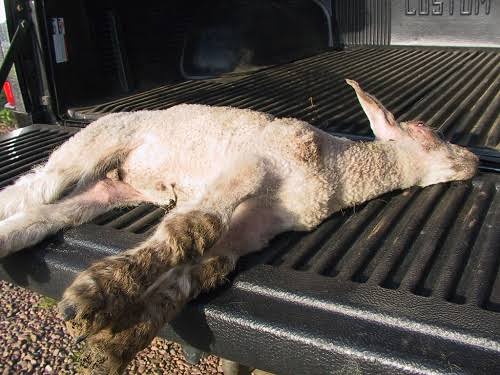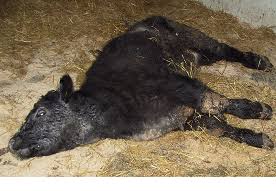Clostridial diseases, scientifically known as clostridiosis, are a group of illnesses caused by bacteria called Clostridium. These bacteria are widespread in the environment and can produce harmful toxins that affect animals, including humans.
Tetanus is one such clostridial disease caused by Clostridium tetani. It enters the body through wounds, especially deep cuts or puncture wounds. The bacteria thrive in environments with little or no oxygen, such as dirty wounds. Tetanus can lead to muscle stiffness, spasms, and even respiratory failure.
Another notable clostridial disease is blackleg, caused by Clostridium chauvoei. This bacterium is commonly found in soil, and the disease primarily affects cattle. Blackleg often occurs when the bacterium enters wounds, causing severe muscle inflammation and tissue damage. It can lead to lameness and, if left untreated, can be fatal.
Clostridial diseases generally share common characteristics, with bacteria producing potent toxins. These toxins can have severe effects on the nervous and muscular systems. Vaccination is a crucial preventive measure against these diseases, helping animals develop immunity and reducing the risk of infection.
In addition to tetanus and blackleg, other clostridial diseases include botulism, caused by Clostridium botulinum, and malignant edema, caused by Clostridium septicum. Botulism affects the nervous system and can lead to paralysis, while malignant edema results in tissue swelling and inflammation.
Prompt medical attention and proper wound care are essential in treating clostridial infections. Antibiotics may be prescribed to control bacterial growth, and supportive care helps manage symptoms. Prevention through vaccination remains a key strategy, especially in livestock management.
Understanding the basics of clostridial diseases emphasizes the importance of maintaining hygiene, managing wounds effectively, and implementing vaccination programs to safeguard both human and animal health. These measures contribute significantly to minimizing the impact of clostridial infections in various populations.
Read Also: Importance of Rabbit Urine and How to Use it
Animals Affected by Clostridial Diseases (clostridiosis)

Clostridial diseases can affect a wide range of animals, both domestic and wild. These diseases, caused by bacteria of the Clostridium genus, may manifest differently in various species. Here’s a brief overview:
1. Livestock:
Cattle: Blackleg (Clostridium chauvoei) is a significant concern in cattle. It can cause sudden death and severe muscle damage.
Sheep and Goats: Clostridial diseases like enterotoxemia (Clostridium perfringens type D) can affect small ruminants, leading to symptoms such as bloating, convulsions, and sudden death.
2. Horses:
Tetanus: Horses are susceptible to tetanus, and the disease often occurs after wounds or injuries. It can result in muscle stiffness and difficulty eating.
3. Poultry:
Chickens: Necrotic enteritis, caused by Clostridium perfringens, is a concern in poultry farming. It can lead to severe intestinal damage and economic losses.
4. Wildlife:
Various species: Clostridial diseases can affect wildlife, particularly those living in environments with Clostridium bacteria. Botulism, for instance, can impact birds and mammals.
5. Humans:
Tetanus: While not exclusive to animals, tetanus can affect humans. It is particularly concerning when wounds are contaminated with soil or other materials containing Clostridium tetani.
Clostridial diseases often target animals with compromised immune systems or those exposed to environments where the bacteria thrive. Vaccination is a crucial tool in preventing these diseases in livestock, ensuring the well-being of animals and minimizing economic losses in agriculture. Understanding the range of animals susceptible to clostridial diseases underscores the importance of adopting preventive measures across different species.
Damages Caused by Clostridial Diseases

Clostridial diseases can cause significant damages in affected animals, leading to economic losses in agriculture and posing health risks. The damages vary depending on the specific clostridial disease, but some common consequences include:
1. Muscle Damage: Diseases like blackleg (Clostridium chauvoei) can result in severe muscle damage. The toxins produced by the bacteria cause necrosis (death) of muscle tissue, leading to loss of function and, in extreme cases, the affected animal may be unable to stand.
2. Economic Losses: In livestock farming, clostridial diseases can have a substantial economic impact. Infected animals may die suddenly, leading to losses in meat production, milk yield, or potential breeding stock.
3. Reduced Productivity: Clostridial diseases, such as enterotoxemia in small ruminants, can reduce productivity by causing sudden deaths in otherwise healthy animals. This can affect herd or flock growth and overall production.
4. Wound Infections: Tetanus, caused by Clostridium tetani, often enters the body through wounds. If left untreated, it can lead to severe systemic infections, affecting multiple organs and causing long-term health issues.
5. Impact on Wildlife: Clostridial diseases can affect wildlife populations. For example, botulism outbreaks in waterfowl can lead to significant declines in bird numbers, disrupting ecosystems and affecting biodiversity.
6. Medical Treatment Costs: Treating animals affected by clostridial diseases can be expensive. Veterinary care, including the administration of antibiotics, antitoxins, and other supportive treatments, contributes to the overall cost of managing these infections.
7. Risk to Human Health: While primarily affecting animals, some clostridial diseases, like tetanus, pose a risk to human health. Proper wound care and vaccination are essential to prevent human infections.
Understanding the damages caused by clostridial diseases emphasizes the importance of preventive measures, such as vaccination and effective wound management. These strategies not only protect animal health and welfare but also play a crucial role in sustaining agricultural practices and minimizing economic losses associated with these infections.
Read Also: Common Rabbit Diseases and How to Cure them
Control and Preventive Measures

Controlling and preventing clostridial diseases in animals involves a combination of strategic measures aimed at minimizing exposure to the bacteria and enhancing immunity. Here are key control and preventive measures:
1. Vaccination Programs: Implementing regular vaccination programs is a fundamental strategy. Vaccines are available for various clostridial diseases, including tetanus, blackleg, and enterotoxemia. Animals are typically vaccinated in early stages of life and receive booster shots to maintain immunity.
2. Hygiene and Wound Management: Practicing good hygiene is crucial to prevent wound infections. Proper wound care, cleaning, and disinfection reduce the risk of Clostridium bacteria entering through cuts or injuries. This is particularly important in livestock and pet management.
3. Isolation and Quarantine: Isolating sick animals and implementing quarantine measures can help prevent the spread of clostridial diseases within herds or flocks. This is essential to contain outbreaks and protect healthy individuals.
4. Feed and Water Management: Ensuring clean and uncontaminated feed and water sources is vital. Contaminated feed or water can introduce Clostridium bacteria into an animal’s system, increasing the risk of infection.
5. Proper Nutrition: Providing animals with balanced nutrition supports overall health and strengthens their immune systems. Well-nourished animals are better equipped to resist and recover from infections.
6. Monitoring and Surveillance: Regular monitoring of animals for signs of illness and surveillance for disease outbreaks are critical. Early detection allows for prompt intervention, reducing the impact of clostridial diseases on the affected population.
7. Biosecurity Measures: Implementing biosecurity measures on farms or in animal facilities helps prevent the introduction of infectious agents. This includes controlling access to facilities, proper waste disposal, and minimizing contact with potentially contaminated environments.
8. Veterinary Consultation: Seeking advice from veterinarians is essential for developing tailored disease prevention and control strategies. Veterinarians can provide guidance on vaccination schedules, overall herd or flock health, and appropriate response to outbreaks.
9. Research and Education: Ongoing research and educational efforts contribute to a better understanding of clostridial diseases. Farmers, veterinarians, and animal caretakers benefit from staying informed about the latest developments in disease management and prevention.
By combining these measures, animal owners and caretakers can significantly reduce the risk of clostridial diseases, ensuring the health and well-being of their animals while minimizing economic losses associated with these infections.
Frequently Asked Questions (FAQs) About Clostridial Diseases (clostridiosis)
1. Q: What are clostridial diseases?
A: Clostridial diseases are illnesses caused by bacteria of the Clostridium genus. These bacteria produce toxins that can harm animals, leading to various diseases like tetanus, blackleg, and enterotoxemia.
2. Q: How do animals get infected with clostridial diseases?
A: Animals can get infected through wounds, ingestion of contaminated feed or water, or exposure to environments with Clostridium bacteria. The bacteria are commonly found in soil and can enter the body through cuts or injuries.
3. Q: Which animals are most susceptible to clostridial diseases?
A: Various animals can be affected, including livestock (cattle, sheep, goats), horses, poultry, and even wildlife. The susceptibility depends on factors such as species, age, and overall health.
4. Q: What are the common symptoms of clostridial diseases in animals?
A: Symptoms vary, but they may include sudden death, muscle stiffness, convulsions, difficulty breathing, and lameness. The specific symptoms depend on the type of clostridial disease and the affected species.
5. Q: Can clostridial diseases be treated?
A: Treatment involves prompt veterinary care. Antibiotics, antitoxins, and supportive therapies may be administered. However, prevention through vaccination is crucial, as treatment may not always be effective once clinical signs appear.
6. Q: How can clostridial diseases be prevented?
A: Preventive measures include vaccination, good hygiene practices, proper wound management, isolation of sick animals, and maintaining clean feed and water sources. These strategies help minimize the risk of infection.
7. Q: Is there a vaccine for clostridial diseases?
A: Yes, vaccines are available for various clostridial diseases. Animals are typically vaccinated in their early stages of life and receive booster shots to maintain immunity. Consult with a veterinarian for a suitable vaccination program.
8. Q: Can humans get clostridial diseases from animals?
A: While some clostridial diseases primarily affect animals, humans can contract diseases like tetanus from contaminated wounds. Proper wound care and vaccination are essential for preventing human infections.
9. Q: Are there differences in clostridial diseases between domestic and wild animals?
A: Clostridial diseases can affect both domestic and wild animals. The impact may vary based on factors such as species, habitat, and overall health. Outbreaks in wildlife can have ecological consequences.
10. Q: What should I do if I suspect clostridial disease in my animals?
A: Seek immediate veterinary attention. Early diagnosis and treatment are crucial. Implement quarantine measures, and follow the veterinarian’s guidance on treatment and preventive measures to control the spread of the disease.
Read Also: Guide to Waste Management Industry Trends

